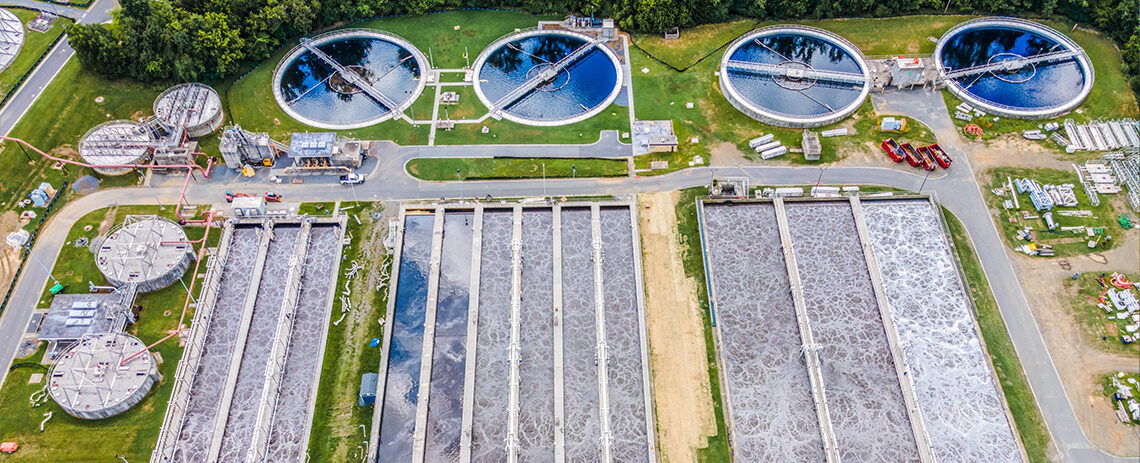The Connection Between Wastewater Management and Public Health
Wiki Article
Recognizing Wastewater Therapy Processes and Their Ecological Effect
The ins and outs of wastewater therapy processes play a critical function in mitigating environmental challenges linked with water air pollution. Each phase, from initial to innovative therapies, is developed to deal with specific contaminants, inevitably guarding both public wellness and aquatic communities.Summary of Wastewater Treatment
Just how is wastewater changed into a safe source for the atmosphere? Wastewater treatment is an essential procedure developed to remove impurities from utilized water, thus safeguarding public wellness and safeguarding ecological communities. This process starts with the collection of wastewater from household, industrial, and commercial resources, which is then routed to treatment centers.At these centers, different physical, chemical, and biological approaches are employed to deal with the wastewater. Consequently, biological treatments, such as turned on sludge processes, use bacteria to break down natural matter.
The dealt with effluent can be safely discharged into all-natural water bodies or recycled for irrigation and industrial functions, promoting resource preservation. Additionally, the therapy procedure creates biosolids, which can be repurposed as fertilizers or soil modifications, better boosting sustainability.
Phases of Treatment Procedures
The wastewater therapy process generally includes three key phases: preliminary, primary, and secondary treatment. Each stage offers an unique duty in lowering the toxin tons and making certain the effluent meets environmental criteria prior to discharge.
The primary treatment phase concentrates on the physical separation of suspended solids from the wastewater. With sedimentation, larger bits work out at the bottom of sedimentation storage tanks, forming sludge, while lighter products, such as oils and oils, float to the surface and are skimmed. This procedure considerably decreases the natural and not natural tons in the wastewater.
Additional therapy is an organic procedure aimed at further decreasing the concentration of organic matter. This phase is important for achieving the required biochemical oxygen demand (FIGURE) decrease, inevitably leading to cleaner effluent ready for discharge or further treatment.

Advanced Therapy Technologies
Adhering to the additional treatment procedures, advanced treatment modern technologies play an essential role in additional improving the top quality of treated wastewater. These innovations are designed to eliminate recurring pollutants that are not effectively gotten rid of throughout key and second therapies, making certain the effluent meets strict regulative requirements.Among the extensively utilized sophisticated therapy approaches are membrane layer filtration, reverse osmosis, and advanced oxidation procedures. Membrane layer filtration, consisting of microfiltration and ultrafiltration, is reliable in dividing fine fragments, pathogens, and colloids from the water (Wastewater). Reverse osmosis utilizes semi-permeable membrane layers to get rid of liquified solids, resulting in top quality water appropriate for different applications
Advanced oxidation processes (AOPs) utilize solid oxidants to break down natural contaminants, consisting of pharmaceuticals useful source and personal care items that are immune to conventional therapy. These methods improve the biodegradability of intricate compounds, promoting their removal.
An additional substantial modern technology is making use of biological nutrient removal procedures, which specifically target nitrogen and phosphorus, avoiding eutrophication in receiving water bodies. Overall, innovative therapy modern technologies are necessary for attaining higher degrees of purification, promoting water reuse, and guarding public health and wellness while attending to the difficulties connected with wastewater monitoring.
Environmental Advantages of Treatment
Many ecological advantages emerge from effective wastewater treatment processes that add to ecosystem wellness and sustainability. Mostly, these procedures considerably reduce the release of dangerous contaminants right into natural water bodies, which assists preserve marine ecosystems. By removing impurities such as hefty steels, nutrients, and virus, treated wastewater reduces the risk of waterborne diseases and promotes biodiversity in aquatic atmospheres.Furthermore, wastewater treatment facilities commonly utilize sophisticated innovations that allow water recycling and reuse. over here This practice not just preserves freshwater sources but also lowers the need on natural water supplies. Improved nutrient elimination from wastewater can additionally stop eutrophication, a process that results in algal blooms and subsequent oxygen exhaustion in aquatic systems.
In addition, effective therapy procedures can decrease greenhouse gas emissions, especially methane and laughing gas, which are often launched during neglected wastewater disintegration. By capturing and using biogas from anaerobic digesters, centers can transform waste right into renewable resource, therefore contributing to a decrease in nonrenewable fuel source dependence.
Difficulties and Future Trends
While the environmental advantages of wastewater therapy are clear, several challenges linger that impede optimal end results in this field. One significant concern is aging facilities, which frequently brings about inefficiencies and boosted functional prices - Wastewater. Many treatment plants were developed decades back, and their abilities do not line up with modern-day demands, which include stricter regulative criteria and higher volumes of wastewater due to urbanization
Looking in advance, there is an expanding emphasis on resource recovery and round economy principles within wastewater treatment. Innovations such as anaerobic digestion, which can create biogas, and progressed filtering modern technologies are getting traction. These approaches not just boost therapy performance yet likewise promote sustainability.
Ultimately, addressing these difficulties requires collaboration among stakeholders, investment in modern technology, and a dedication to recurring study. By welcoming these trends, the wastewater therapy sector can develop to satisfy the demands of an altering environment and culture.
Conclusion
In conclusion, wastewater treatment procedures play an important duty in enhancing ecological top quality and public wellness. The multi-stage treatment structure, coupled with advanced modern technologies, efficiently reduces air pollution and promotes sustainable water monitoring. By resolving residual contaminants and reducing vitamins and mineral drainage, these processes add to the conservation of aquatic environments and the reduction of greenhouse gas emissions. Continued developments and adaptations in treatment methods will certainly be necessary for overcoming emerging difficulties and guaranteeing the sustainability of natural deposits (Wastewater).Report this wiki page